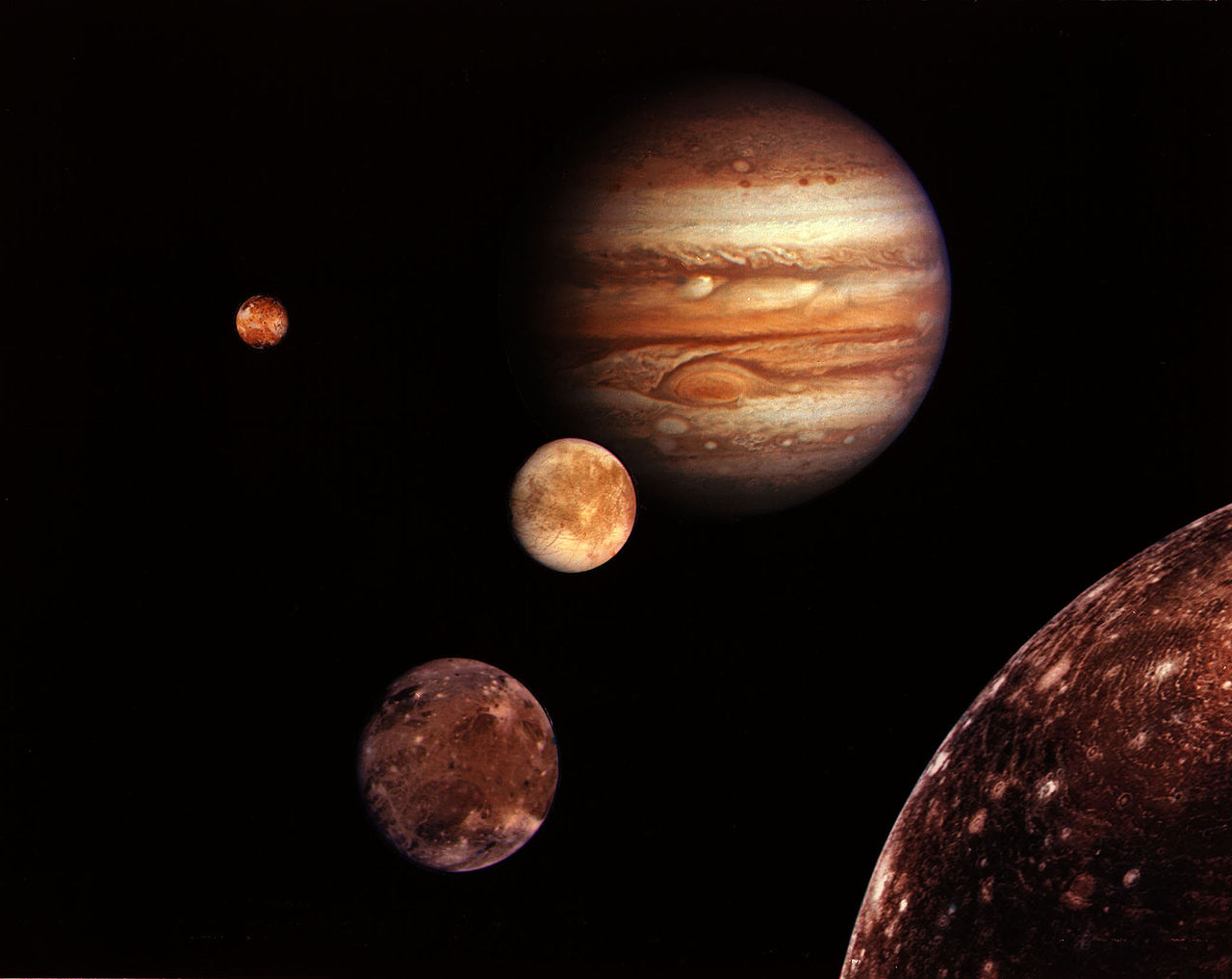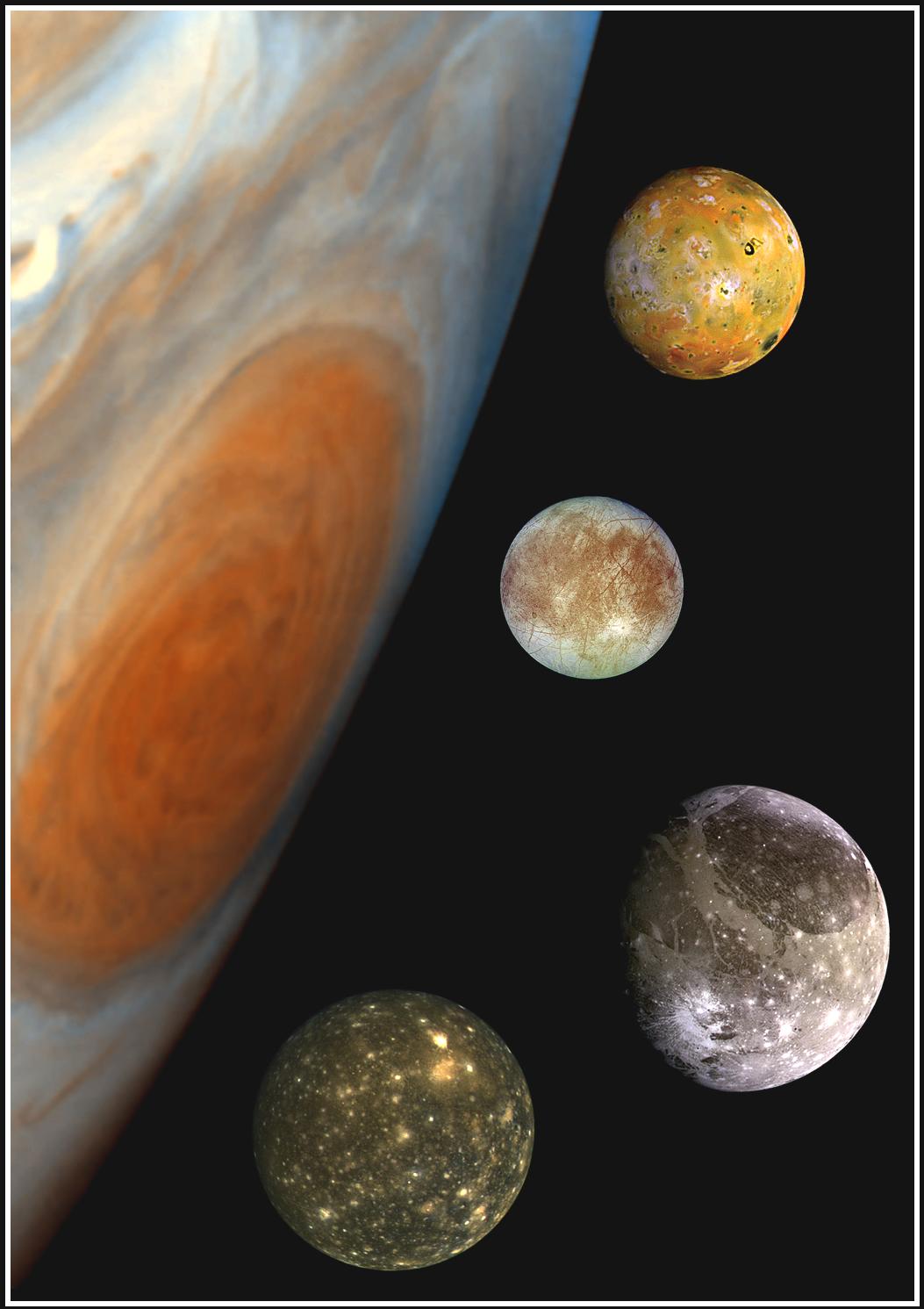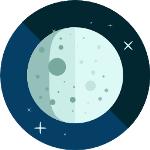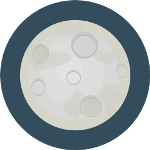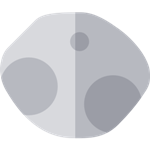Jupiter’s Galilean Moon System
Learn About Jupiter's Galilean Moons + 65 Others!
Jupiter has the at least 69 moons, the second most of any planet in the solar system after Saturn. Eight are regular satellites with prograde and nearly circular orbits, the closest four moons are relatively small and contribute to Jupiter’s ring system. The four large Galilean moons, which Galileo Galilei discovered in 1610, were named after the lovers of the Roman god Jupiter and are among the most massive moons in the solar system and make up 99.997% of Jupiter’s moon system! The remainder 61 moons are irregular satellites whose prograde, retrograde and eccentric orbits are likely captured asteroids.
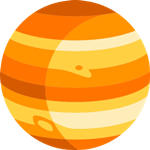
Facts About The Volcanic Moon Io
Appearing like a giant ball of mouldy cheese and almost completely devoid of craters, Io is easily the most geologically active object in the solar system and is home to over 400 volcanoes! Learn more here >>
Interesting Facts About The Frozen Ocean World Of Europa
Europa is one of the smoothest and most reflective objects in the solar system on account of its young icy surface which may harbour a global ocean of saltwater and which may inhabit alien life! Learn more here >>
Read About The Ancient And Battered Moon Callisto
Callisto is the 3rd largest moon in the solar system, yet shows no signs of processes that have altered its surface since its formation, resulting in it having the Oldest and most Cratered surface in the solar system. Learn more here >>
Learn About The Gigantic Moon Ganymede
Ganymede is the Largest and most Massive moon in the solar system and is even bigger than the Planet Mercury and the dwarf planet Pluto! Learn more here >>
Amalthea - The Biggest of Jupiter's Non-Galilean Moons
Amathea is one of the inner moons and resembles what you might think an asteroid would look like. Read about this interesting little moon which is dwarfed by its giant Galilean neighbours! Learn more here >>
Jupiter's 64 Other Small Moons (and Counting)
There have been 65 irregularly shaped small moons that orbit in three regions around Jupiter with quite different origins and histories depending on their locations, but relatively little is known about them as only the 4 small inner moons have been imaged studied by spacecraft. Learn more here >>
